2019-08-29 - Nº 226
Editorial
Esta é a Newsletter Nº 226 que se apresenta com o mesmo formato que as anteriores. Se gostar da Newsletter partilhe-a!
Todas as Newsletters encontram-se indexadas no link.
Esta Newsletter tem os seguintes tópicos:
Faz hoje anos que nascia, em 1876, Charles F. Kettering. Este Engenheiro americano registou cerca de 140 patentes que incluíam os sistemas de arranque eléctrico, iluminação para carros e sistemas de ignição. No início de sua carreira, com a National Cash Register Co., Dayton (1904-09), ele criou a primeira caixa registadora eléctrica com um motor eléctrico que abria a gaveta. Quando ele co-fundou a Dayton Engineering Laboratories Company (DELCO, com Edward A. Deeds), ele inventou o motor de arranque automático operado por chave para o Cadillac (1912) e que se espalhou para quase todos os carros novos na década de 1920. Como vice-presidente e director de pesquisa da General Motors Corp. (1920-1947), ele desenvolveu motores, acabamentos de laca de secagem rápida, combustíveis antidetonantes e transmissões de velocidade variável. Em associação com a DuPont Chemical Company, ele também foi responsável pela invenção do refrigerante Freon para sistemas de refrigeração e ar condicionado.
Faz igualmente hoje anos que nascia, em 1959, Stephen Wolfram. Este cientista da computação, físico e empresário britânico/americano criou o software Mathematica o conhecido sistema de álgebra computacional. Como empresário, ele é o fundador e CEO da empresa de software Wolfram Research, onde trabalhou como responsável pelo Mathematica e pelo mecanismo de resposta Wolfram Alpha. O seu trabalho recente foi sobre programação baseada no conhecimento, expandindo e refinando a linguagem de programação do Mathematica para o que agora é chamado de Wolfram Language.
Nesta semana que passou, passaram 30 anos que a sonda Voyager 2 fez um voo próximo do planeta Neptuno. Foi a 25 de Agosto de 1989, que a sonda Voyager 2 da NASA esteve perto de Neptuno, dando à humanidade o primeira vista do oitavo planeta do nosso sistema solar. A marcar o final do Grand Tour da missão Voyager pelos quatro planetas gigantes do sistema solar - Júpiter, Saturno, Úrano e Neptuno - foi o primeiro também um último: nenhuma outra sonda visitou Neptuno desde então.
Na Newsletter desta semana apresentamos diversos projetos de maker. São também apresentadas as revistas newelectronics de 13 de Agosto e a MagPI nº85 de Setembro.
 João Alves ([email protected])
João Alves ([email protected])
O conteúdo da Newsletter encontra-se sob a licença  Creative Commons Attribution-NonCommercial-ShareAlike 4.0 International License.
Creative Commons Attribution-NonCommercial-ShareAlike 4.0 International License.
Novidades da Semana

30 Years Ago: Voyager 2's Historic Neptune Flyby
"Thirty years ago, on Aug. 25, 1989, NASA's Voyager 2 spacecraft made a close flyby of Neptune, giving humanity its first close-up of our solar system's eighth planet. Marking the end of the Voyager mission's Grand Tour of the solar system's four giant planets - Jupiter, Saturn, Uranus and Neptune - that first was also a last: No other spacecraft has visited Neptune since. "The Voyager planetary program really was an opportunity to show the public what science is all about," said Ed Stone, a professor of physics at Caltech and Voyager's project scientist since 1975. "Every day we learned something new." Wrapped in teal- and cobalt-colored bands of clouds, the planet that Voyager 2 revealed looked like a blue-hued sibling to Jupiter and Saturn, the blue indicating the presence of methane. A massive, slate-colored storm was dubbed the "Great Dark Spot," similar to Jupiter's Great Red Spot." [...]
Outras Notícias
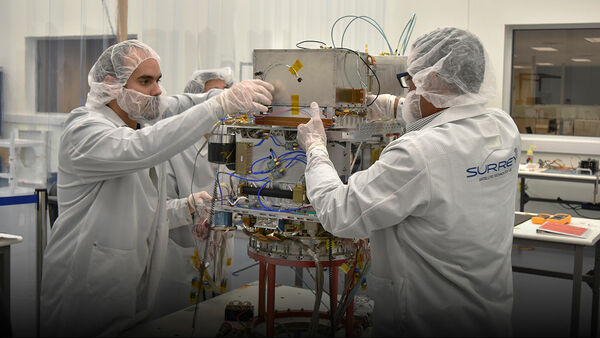
NASA Activates Deep Space Atomic Clock
"An atomic clock that could pave the way for autonomous deep space travel was successfully activated last week and is ready to begin its year-long tech demo, the mission team confirmed on Friday, Aug. 23, 2019. Launched in June, NASA's Deep Space Atomic Clock is a critical step toward enabling spacecraft to safely navigate themselves in deep space rather than rely on the time-consuming process of receiving directions from Earth. Developed at NASA's Jet Propulsion Laboratory in Pasadena, California, the clock is the first timekeeper stable enough to map a spacecraft's trajectory in deep space while being small enough to fly onboard the spacecraft. A more stable clock can operate farther from Earth, where it needs to work well for longer periods than satellites closer to home. Atomic clocks, like those used in GPS satellites, are used to measure the distance between objects by timing how long it takes a signal to travel from Point A to Point B. For space exploration, atomic clocks must be extremely precise: an error of even one second means the difference between landing on a planet like Mars or missing it by hundreds of thousands of miles." [...]

Intel Ships First 10nm Agilex FPGAs
"Intel today announced that it has begun shipments of the first Intel® Agilex® field programmable gate arrays (FPGAs) to early access program customers. Participants in the early access program include Colorado Engineering Inc., Mantaro Networks, Microsoft and Silicom. These customers are using Agilex FPGAs to develop advanced solutions for networking, 5G and accelerated data analytics. “The Intel Agilex FPGA product family leverages the breadth of Intel innovation and technology leadership, including architecture, packaging, process technology, developer tools and a fast path to power reduction with eASIC technology. These unmatched assets enable new levels of heterogeneous computing, system integration and processor connectivity and will be the first 10nm FPGA to provide cache-coherent and low latency connectivity to Intel® Xeon® processors with the upcoming Compute Express Link.” –Dan McNamara, Intel senior vice president and general manager of the Networking and Custom Logic Group Why It’s Important: In the data-centric, 5G-fueled era, networking throughput must increase, and latency must decrease. Intel Agilex FPGAs provide the flexibility and agility required to meet these challenges by delivering significant gains in performance1 and inherent low latency." [...]
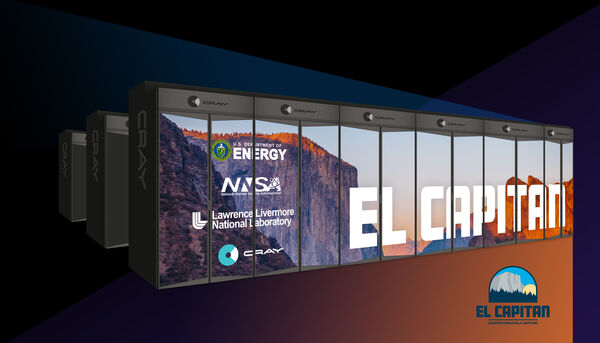
Cray Announces Third Exascale Supercomputer Win
"On August 13 we announced our third contract in six months to deliver an exascale supercomputer to the U.S. Department of Energy. That’s right. Three. Named El Capitan and slated for delivery to Lawrence Livermore National Laboratory, this third system ($600 million total contract value) follows two previously announced Cray and DOE exascale supercomputers — Aurora at Argonne National Laboratory and Frontier at Oak Ridge National Laboratory. The trio of sister systems will be the first exascale supercomputers in the United States. And all three will be built on the new Cray® Shasta™ architecture." [...]
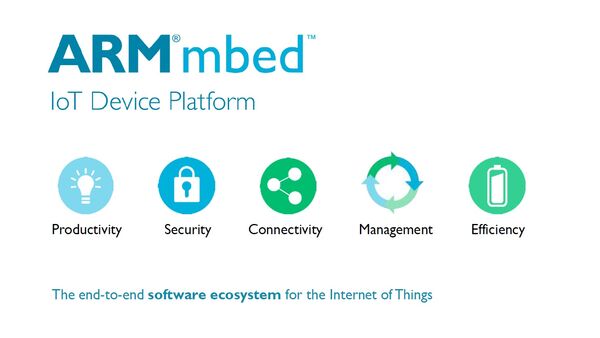
Mbed OS 5.13.4 released
"We are pleased to announce the Mbed OS 5.13.4 release is now available. This is the last patch release based on the feature set that Mbed OS 5.13 introduces. Summary In this release we have added the following targets: CC3220SF_Launchxl Arduino Nano 33 BLE mbed-coap has been updated to version 4.8.1. This brings the following changes: Store ACK's also into duplicate info list. ROM size optimization. Flash size has gone down 1100 bytes." [...]

Japan's Hayabusa2 Asteroid Probe Packs Its Space-Rock Bag for Return to Earth
"Japan's Hayabusa2 spacecraft has packed up the capsule that will ferry its precious space-rock cargo back to Earth in preparation to leave the asteroid Ryugu later this year. It's just one step completed by the Japan Aerospace Exploration Agency (JAXA) spacecraft as the agency turns its attention to the return phase of the mission. Hayabusa2 completed its second and final sampling maneuver in July. The endeavor's completion likely means that the spacecraft's three-chamber sample storage mechanism is full up, with bits of rock from both the surface and the interior of Ryugu. Today (Aug. 26), JAXA confirmed that the sampling chamber has now been stored inside the re-entry capsule, which will be the only part of the spacecraft to return to Earth. That capsule should arrive home in late 2020." [...]

Bell Autonomous Pod Transport 70 Achieves First Autonomous Flight
"Bell Textron Inc., a Textron Inc. (NYSE: TXT) company, announced today the successful first autonomous flight of the Autonomous Pod Transport (APT) 70 at their testing site near Fort Worth. Bell plans to continue to test the vehicle under an experimental type certificate throughout the remainder of the year. “We are excited to reach this milestone, and look forward to continuing to advance this technology for our customers,” said Scott Drennan, vice president, Innovation. “The APT is designed to be capable of various mission sets, from package delivery to critical medical transport to disaster relief. We believe this capability will change the way unmanned aerial systems are used commercially in the future.” APT 70 is part of the eVTOL family of vehicles Bell is developing and can reach speeds of more than 100mph and has a baseline payload capability of 70 lbs. Bell’s APT systems allow for flexible mission capabilities while keeping operations simple, efficient and fast; they are capable of twice the speed and range of a conventional multirotor." [...]
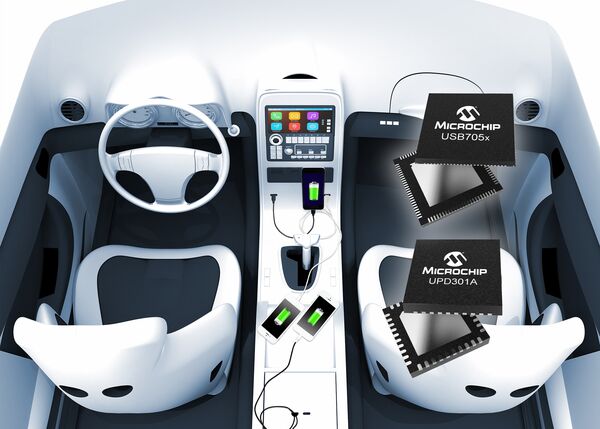
Simplify Power Delivery (PD) in Growing USB Type-C™ Charging Market with Two USB-PD Solutions from Microchip
"Expanding portfolio adds certified USB 3.1 PD SmartHub™ IC with HostFlexing and PDBalancing plus standalone USB Type-C PD controller for simpler applications USB Type-C has become increasingly popular, and with the introduction of Power Delivery (PD), it is now possible to charge more types of devices – and charge faster – than ever before. To remove the traditional complexity and high costs associated with implementing USB Type-C, Microchip Technology Inc. (Nasdaq: MCHP) today announced two new solutions that simplify USB Type-C PD for a range of applications. As one of the industry’s first USB-IF-certified USB 3.1 SmartHub devices with integrated support for Power Delivery (TID1212), the USB705x family enables fast device charging and introduces unique PD implementations called HostFlexing and PDBalancing. The UPD301A is a standalone USB Type-C PD controller that significantly simplifies the implementation of basic USB Type-C PD charging functionality, making it ideal for applications from rear seat charging in vehicles to portable equipment to public charging stations. The USB705x family includes two unique features that simplify USB Type-C PD implementations – HostFlexing and PDBalancing. HostFlexing simplifies the user’s docking station experience by allowing all USB Type-C ports to function as the “notebook” port, eliminating the need for cryptic labels that try and explain overall functionality of each USB Type-C port." [...]
Ciência e Tecnologia

MIT engineers build advanced microprocessor out of carbon nanotubes
"New approach harnesses the same fabrication processes used for silicon chips, offers key advance toward next-generation computers. After years of tackling numerous design and manufacturing challenges, MIT researchers have built a modern microprocessor from carbon nanotube transistors, which are widely seen as a faster, greener alternative to their traditional silicon counterparts. The microprocessor, described today in the journal Nature, can be built using traditional silicon-chip fabrication processes, representing a major step toward making carbon nanotube microprocessors more practical. Silicon transistors — critical microprocessor components that switch between 1 and 0 bits to carry out computations — have carried the computer industry for decades. As predicted by Moore’s Law, industry has been able to shrink down and cram more transistors onto chips every couple of years to help carry out increasingly complex computations. But experts now foresee a time when silicon transistors will stop shrinking, and become increasingly inefficient." [...]

Inspired from nature – robots can now learn to swarm on the go
"A new generation of swarming robots which can independently learn and evolve new behaviours in the wild is one step closer, thanks to research from the University of Bristol and the University of the West of England (UWE). The team used artificial evolution to enable the robots to automatically learn swarm behaviours which are understandable to humans. This new advance published today [Friday 23 August] in Advanced Intelligent Systems, could create new robotic possibilities for environmental monitoring, disaster recovery, infrastructure maintenance, logistics and agriculture. Until now, artificial evolution has typically been run on a computer which is external to the swarm, with the best strategy then copied to the robots. However, this approach is limiting as it requires external infrastructure and a laboratory setting. By using a custom-made swarm of robots with high-processing power embedded within the swarm, the Bristol team were able to discover which rules give rise to desired swarm behaviours." [...]
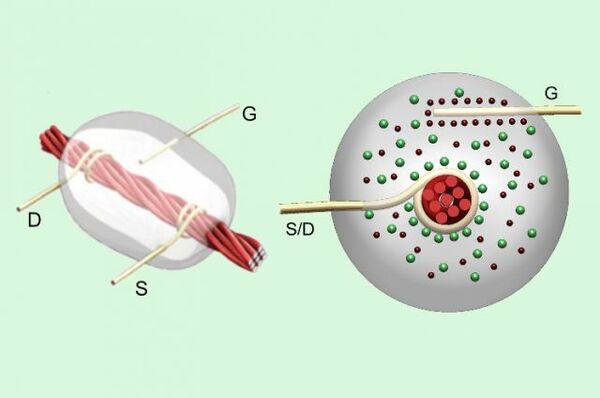
Engineers make transistors and electronic devices entirely from thread
"Transistors and integrated circuits made from threads are combined with thread-based sensors to create fully flexible devices A team of Tufts University engineers has developed a transistor made from linen thread, enabling them to create electronic devices made entirely of thin threads that could be woven into fabric, worn on the skin, or even (theoretically) implanted surgically for diagnostic monitoring. The fully flexible electronic devices could enable a wide range of applications that conform to different shapes and allow free movement without compromising function, the researchers say. In a study published in ACS Applied Materials and Interfaces, the authors describe engineering the first thread-based transistors (TBTs) which can be fashioned into simple, all-thread based logic circuits and integrated circuits. The circuits replace the last remaining rigid component of many current flexible devices, and when combined with thread-based sensors, enable the creation of completely flexible, multiplexed devices. The field of flexible electronics is expanding rapidly, with most devices achieving flexibility by patterning metals and semiconductors into bendable “wavy” structures or using intrinsically flexible materials such as conducting polymers. These “soft” electronics are enabling applications for devices that conform and stretch with the biological tissue in which they are embedded, such as skin, heart or even brain tissue." [...]

Fraunhofer is helping speed up development of fiber-reinforced plastic components
"Fiber-reinforced plastics are the basis for many applications in state-of-the-art lightweight design, and they offer numerous advantages. One major obstacle for smaller companies, however, is the requisite know-how concerning the ideal fiber and textile arrangement. In collaboration with the Institut für Textiltechnik (ITA) and the Assoc. Institute for Management Cybernetics (IfU) in Aachen, the Fraunhofer Institute for Industrial Mathematics ITWM has now developed a mathematical simulation method for optimizing the drapability (deformability) of textiles. Demand for lightweight design is steadily rising in vehicle body, aircraft and building construction. After all, it accommodates a wide array of applications while keeping material consumption to a minimum." [...]
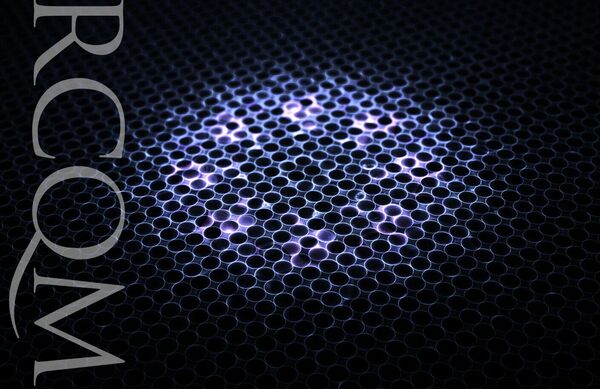
Quantum criticality could be a boon for qubit designers
"Surprising behavior could safeguard information stored in quantum bits Physicists studying the strange behavior of metal alloys called heavy fermions have made a surprising discovery that could be useful in safeguarding the information stored in quantum bits, or qubits, the basic units of encoded information in quantum computers. In a study in the Proceedings of the National Academy of Sciences, researchers from Rice University and the Vienna University of Technology (TU Wien) in Austria examined the behavior of an intermetallic crystal of cerium, palladium and silicon as it was subjected to extreme cold and a strong magnetic field. To their surprise, they found they could transform the quantum behavior of the material in two unique ways, one in which electrons compete to occupy orbitals and another where they compete to occupy spin states. “The effect is so pronounced with one degree of freedom that it ends up liberating the other one,” said Rice’s Qimiao Si, co-corresponding author of the study and the director of the Rice Center for Quantum Materials (RCQM). “You can essentially tune the system to maximize damage to one of these, leaving the other well-defined.” Si said the result could be important for companies like Google, IBM, Intel and others who are competing to develop quantum computers. Unlike today’s digital computers, which use electricity or light to encode bits of information, quantum computers use the quantum states of subatomic particles like electrons to store information in qubits." [...]

World’s First Quantum Computing Safe Tape Drive
"Ten months ago we assembled a team from IBM Research in Switzerland and IBM tape developers based in Tucson, Arizona, to try to build something which has never been built before to address a risk that may not materialize for another decade or more. As you can tell, we love a good challenge. The risk comes from quantum advantage, the point when a quantum computer can perform some particular computation significantly faster than a classical computer. The challenge we faced, develop a quantum computing safe tape drive, because at the current rate of progress in quantum computing, it is expected that data protected by the asymmetric encryption methods used today may become insecure. Preparing Cybersecurity for a Quantum World Quantum computing is an emerging form of computing that takes advantage of quantum mechanical phenomena to solve certain types of problem that are effectively impossible to solve on classical computers. Quantum Advantage will occur when quantum computers surpass today’s classical computers at which point they are expected to enable dramatic advances in areas such as chemistry, bioinformatics and artificial intelligence, but at the same time they will impact information security." [...]

‘Quantum annealer’ shows promise in study
"An international team of researchers, including Lawrence Livermore National Laboratory (LLNL) physicist Arjun Gambhir, has developed a new algorithm for solving polynomial systems of equations using a type of quantum computer called a “quantum annealer.” The team systematically examined how this method scales when facing increasingly difficult mathematical equations, with promising results. It has been theorized that quantum computers would enable researchers to solve problems much faster than they could with classical computing, or even tackle problems too complex for today’s supercomputers, but that “quantum speedup” has not yet been realized. This study provides evidence that quantum annealing could one day deliver these gains. The research was published July 16 in Nature Scientific Reports. “We found that problems that are really hard to solve with classical computing scale differently with quantum annealing,” said LLNL physicist Gambhir. “It was really interesting." [...]
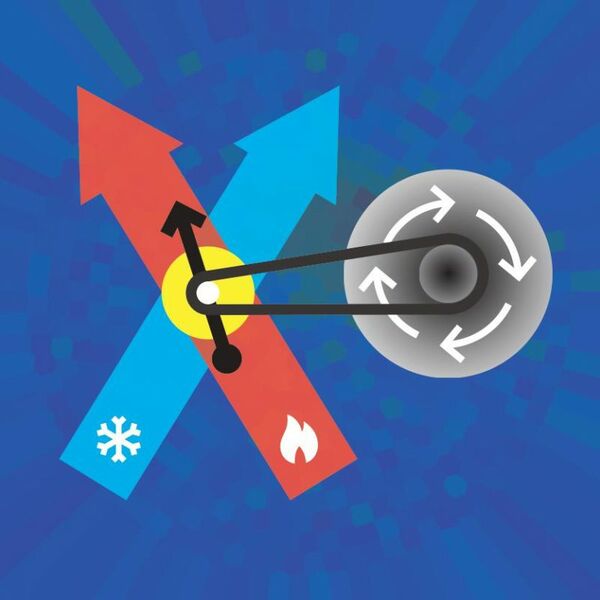
Physicists create world’s smallest engine
"Theoretical physicists at Trinity are among an international collaboration that has built the world’s smallest engine – which, as a single calcium ion, is approximately ten billion times smaller than a car engine. Work performed by Professor John Goold’s QuSys group in Trinity’s School of Physics describes the science behind this tiny motor. The research, published in international journal Physical Review Letters, explains how random fluctuations affect the operation of microscopic machines. In the future, such devices could be incorporated into other technologies in order to recycle waste heat and thus improve energy efficiency. The groundbreaking experiment was carried out by a research group led by Professor Ferdinand Schmidt-Kaler and Dr Ulrich Poschinger of Johannes Gutenberg University in Mainz, Germany. The engine itself – a single calcium ion – is electrically charged, which makes it easy to trap using electric fields." [...]
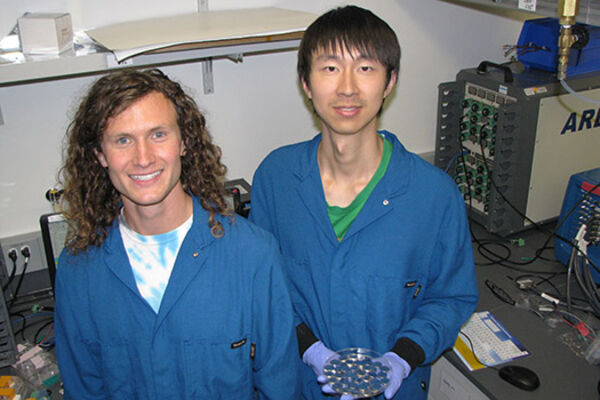
Coating developed by Stanford researchers brings lithium metal battery closer to reality
"A Stanford-led research team invented a new coating that could finally make lightweight lithium metal batteries safe and long lasting, which could usher in the next generation of electric vehicles. Hope has been restored for the rechargeable lithium metal battery – a potential battery powerhouse relegated for decades to the laboratory by its short life expectancy and occasional fiery demise while its rechargeable sibling, the lithium-ion battery, now rakes in more than $30 billion a year. A team of researchers at Stanford University and SLAC National Accelerator Laboratory has invented a coating that overcomes some of the battery’s defects, described in a paper published Aug. 26 in Joule. In laboratory tests, the coating significantly extended the battery’s life. It also dealt with the combustion issue by greatly limiting the tiny needlelike structures – or dendrites – that pierce the separator between the battery’s positive and negative sides. In addition to ruining the battery, dendrites can create a short circuit within the battery’s flammable liquid." [...]

Artificial Muscles Bloom, Dance, and Wave
"Wearing a flower brooch that blooms before your eyes sounds like magic. KAIST researchers have made it real with robotic muscles. Researchers have developed an ultrathin, artificial muscle for soft robotics. The advancement, recently reported in the journal Science Robotics, was demonstrated with a robotic blooming flower brooch, dancing robotic butterflies and fluttering tree leaves on a kinetic art piece. The robotic equivalent of a muscle that can move is called an actuator. The actuator expands, contracts or rotates like muscle fibers using a stimulus such as electricity." [...]
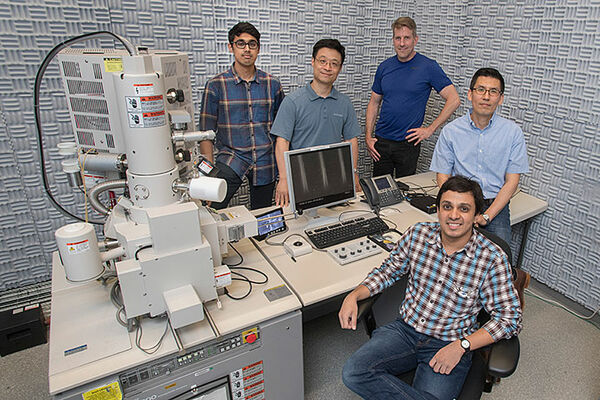
Enhancing Materials for Hi-Res Patterning to Advance Microelectronics
"Scientists at Brookhaven Lab's Center for Functional Nanomaterials created "hybrid" organic-inorganic materials for transferring ultrasmall, high-aspect-ratio features into silicon for next-generation electronic devices To increase the processing speed and reduce the power consumption of electronic devices, the microelectronics industry continues to push for smaller and smaller feature sizes. Transistors in today’s cell phones are typically 10 nanometers (nm) across—equivalent to about 50 silicon atoms wide—or smaller. Scaling transistors down below these dimensions with higher accuracy requires advanced materials for lithography—the primary technique for printing electrical circuit elements on silicon wafers to manufacture electronic chips. One challenge is developing robust “resists,” or materials that are used as templates for transferring circuit patterns into device-useful substrates such as silicon. Now, scientists from the Center for Functional Nanomaterials (CFN)—a U.S. Department of Energy (DOE) Office of Science User Facility at Brookhaven National Laboratory—have used the recently developed technique of infiltration synthesis to create resists that combine the organic polymer poly(methyl methacrylate), or PMMA, with inorganic aluminum oxide. Owing to its low cost and high resolution, PMMA is the most widely used resist in electron-beam lithography (EBL), a kind of lithography in which electrons are used to create the pattern template." [...]
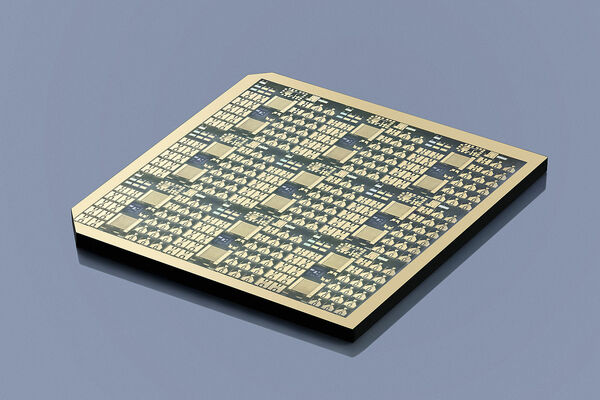
Energy-efficient power electronics – gallium oxide power transistors with record values
"Powerful electronic components are indispensable for future communications, for the digital transformation of society and for artificial intelligence applications. On a footprint as small as possible, they should offer low energy consumption and achieve ever higher power densities, thus working more efficiently. This is where conventional devices reach their limits. Scientists all over the world are therefore investigating new materials and components that can meet these requirements. The Ferdinand-Braun-Institut (FBH) has now achieved a breakthrough with transistors based on gallium oxide (ß-Ga2O3). The newly developed ß-Ga2O3-MOSFETs (metal-oxide-semiconductor field-effect transistor) provide a high breakdown voltage combined with high current conductivity." [...]

Laser printing tech produces waterproof e-textiles in minutes
"The next generation of waterproof smart fabrics will be laser printed and made in minutes. That’s the future imagined by the researchers behind new e-textile technology. Scientists from RMIT have developed a cost-efficient and scaleable method for rapidly fabricating textiles that are embedded with energy storage devices. In just three minutes, the method can produce a 10x10cm smart textile patch that’s waterproof, stretchable and readily integrated with energy harvesting technologies. The technology enables graphene supercapacitors – powerful and long-lasting energy storage devices that are easily combined with solar or other sources of power – to be laser printed directly onto textiles. In a proof-of-concept, the researchers connected the supercapacitor with a solar cell, delivering an efficient, washable and self-powering smart fabric that overcomes the key drawbacks of existing e-textile energy storage technologies." [...]

Self-folding “Rollbot” paves the way for fully untethered soft robots
"3D-printed active hinges change shape in response to heat The majority of soft robots today rely on external power and control, keeping them tethered to off-board systems or rigged with hard components. Now, researchers from the Harvard John A. Paulson School of Engineering and Applied Sciences (SEAS) and Caltech have developed soft robotic systems, inspired by origami, that can move and change shape in response to external stimuli, paving the way for fully untethered soft robots. The research is published in Science Robotics. “The ability to integrate active materials within 3D-printed objects enables the design and fabrication of entirely new classes of soft robotic matter,” said Jennifer A. Lewis, the Hansjorg Wyss Professor of Biologically Inspired Engineering at SEAS and co-lead author of the study. Lewis is also a Core Faculty Member at the Wyss Institute for Biologically Inspired Engineering at Harvard. The researchers turned to origami to create multifunctional soft robots." [...]
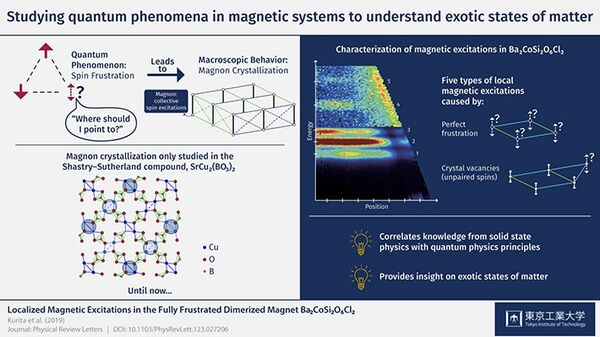
Studying quantum phenomena in magnetic systems to understand exotic states of matter
"Scientists at Tokyo Institute of Technology (Tokyo Tech), Aoyama-Gakuin University, and J-PARC Center unify condensed matter physics and quantum physics by experimentally characterizing magnetism-related quantum phenomena in Ba2CoSi2O6Cl2. Apart from the states of matter that we are all aware of and accustomed to, which correspond to solids, liquids, and gases, more exotic states can be generated in specific materials under special conditions. Such states are of great interest to physicists because they help them gain a deeper understanding of quantum phenomena, which is key for scientists and engineers to innovate state-of-the-art technology. Bose–Einstein condensate is one such state of matter that occurs at very low temperatures. In this state, most of the constituent particles of the condensate are in the so-called "ground state", which is the state with the lowest energy, and microscopic quantum phenomena can be easily observed. Interestingly, this state can also be exhibited by quasiparticles, which are not actual particles but represent collective microscopic excitations in a system and can be thus used to describe the system in a simplified, yet very useful manner." [...]

First report of superconductivity in a nickel oxide material
"Made with ‘Jenga chemistry,’ the discovery could help crack the mystery of how high-temperature superconductors work. Menlo Park, Calif. — Scientists at the Department of Energy’s SLAC National Accelerator Laboratory and Stanford University have made the first nickel oxide material that shows clear signs of superconductivity – the ability to transmit electrical current with no loss. Also known as a nickelate, it’s the first in a potential new family of unconventional superconductors that’s very similar to the copper oxides, or cuprates, whose discovery in 1986 raised hopes that superconductors could someday operate at close to room temperature and revolutionize electronic devices, power transmission and other technologies. Those similarities have scientists wondering if nickelates could also superconduct at relatively high temperatures. At the same time, the new material seems different from the cuprates in fundamental ways – for instance, it may not contain a type of magnetism that all the superconducting cuprates have – and this could overturn leading theories of how these unconventional superconductors work. After more than three decades of research, no one has pinned that down." [...]
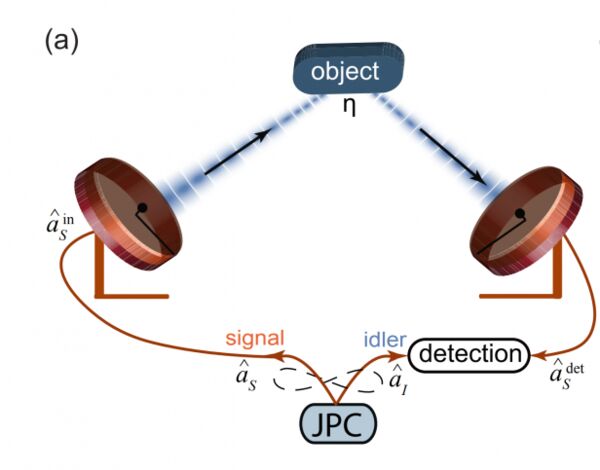
Quantum radar has been demonstrated for the first time
"A radar device that relies on entangled photons works at such low power that it can hide behind background noise, making it useful for biomedical and security applications. One of the advantages of the quantum revolution is the ability to sense the world in a new way. The general idea is to use the special properties of quantum mechanics to make measurements or produce images that are otherwise impossible. Much of this work is done with photons. But as far as the electromagnetic spectrum is concerned, the quantum revolution has been a little one-sided. Almost all the advances in quantum computing, cryptography, teleportation, and so on have involved visible or near-visible light." [...]

Detraction-free light-matter interaction
"An efficient light-matter interface might constitute the foundation of quantum communication. However, certain structures that are formed during the growth process interfere with the signal. Certain semiconductor structures, so-called quantum dots, might constitute the foundation of quantum communication. They are an efficient interface between matter and light, with photons (light particles) emitted by the quantum dots transporting information across large distances. However, structures form by default during the manufacture of quantum dots that interfere with communication. Researchers at the University of Basel, Ruhr-Universität Bochum, and Forschungszentrum Jülich have now successfully eliminated these interferences." [...]
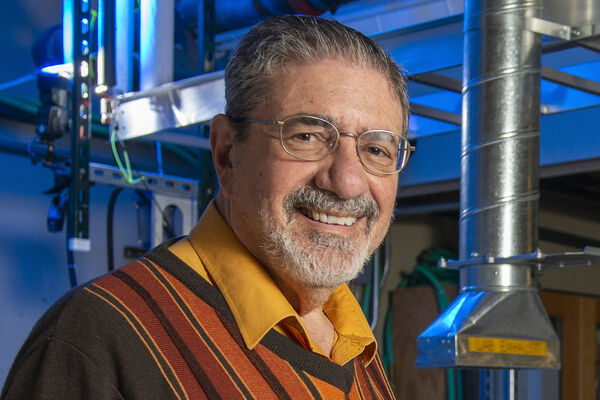
Stanford chemists discover water microdroplets spontaneously produce hydrogen peroxide
"Despite its abundance, water retains a great many secrets. Among them, Stanford chemists have discovered, is that water microdroplets spontaneously produce hydrogen peroxide. Water is everywhere on Earth, but maybe that just gives it more space to hide its secrets. Its latest surprise, Stanford researchers report Aug. 26 in Proceedings of the National Academy of Sciences, is that microscopic droplets of water spontaneously produce hydrogen peroxide. The discovery could pave the way for greener ways to produce the molecule, a common bleaching agent and disinfectant, said Richard Zare, the Marguerite Blake Wilbur Professor in Natural Science and a professor of chemistry in the Stanford School of Humanities and Sciences. “Water is one of the most commonly found materials, and it’s been studied for years and years and you would think that there was nothing more to learn about this molecule." [...]
Modelos 3D
Com a disponibilidade de ferramentas que permitem dar azo a nossa imaginação na criação de peças 3D e espaços como o thingiverse para as publicar, esta rubrica apresenta alguns modelos selecionados que poderão ser úteis.

PolyGear OpenSCAD Gear Library
"PolyGear is a powerful OpenSCAD library for the generation of spur and bevel gears as a single polyhedron. The library allows full control of the involute tooth profile, including pressure angle, backlash, variable helix angle, addendum, dedendum and profile shifting. Being able to vary the helix angle allows for instantaneous generation and switch between herringbone, zerol, spiral and customized profiles; all constructed as a single and smooth polyhedron even for small facet number. The gear is constructed in an extremely efficient way, by triangulating a minimalist vertex cloud with a single polyhedron. I wrote this library because I was unsatisfied with the existing ones: https://www.thingiverse.com/thing:3575 https://www.thingiverse.com/thing:636119 https://www.thingiverse.com/thing:1604369 being, to my taste, either too hampered, fragile or computational expensive. My aim has been overcoming these limitations." [...]
Documentação
A documentação é parte essencial do processo de aprendizagem e a Internet além de artigos interessantes de explorar também tem alguma documentação em formato PDF interessante de ler. Todos os links aqui apresentados são para conteúdo disponibilizado livremente pelo editor do livro.

newelectronics 13 Agosto 2019
"New Electronics is a fortnightly magazine focusing on technological innovation, news and the latest developments in the electronics sector. Downloadable as a digital page turner or pdf file, or offered as a hard copy, the New Electronics magazine is available in a format to suit you. " [...]

The MagPI 85
"Can you do everything with a $55 computer? We’ve been pretty confident about using Raspberry Pi 4 with 4GB RAM as our main desktop PC. This month we put it to the test, by getting one of our best makers to use nothing but Raspberry Pi 4 for a week. And report back the results! PJ Evans has written a seven-day diary experience of using Raspberry Pi 4 as a desktop PC replacement. It’s packed with advice, tips and tricks." [...]
Projetos Maker
Diversos Projetos interessantes.

Isolated High Power DC Solid-State Relay Shield for Arduino
"Isolated high power Mosfet DC solid state relay shield allows you to control high current DC load in switching or PWM control mode. The project can be used in wide verity of applications like DC-DC Converters, inverters, DC motor control, solenoid, LED Dimmer, battery chargers and it can control inductive and resistive loads. On board high current fast recovery diode across the load provided for back EMF protection. The board can control load up to 25A with input supply up to 48V DC. High voltage DC input supply up to 90V is possible by altering DC bus capacitor voltage. Input PWM frequency up to 100 KHz duty cycle 0-100%." [...]
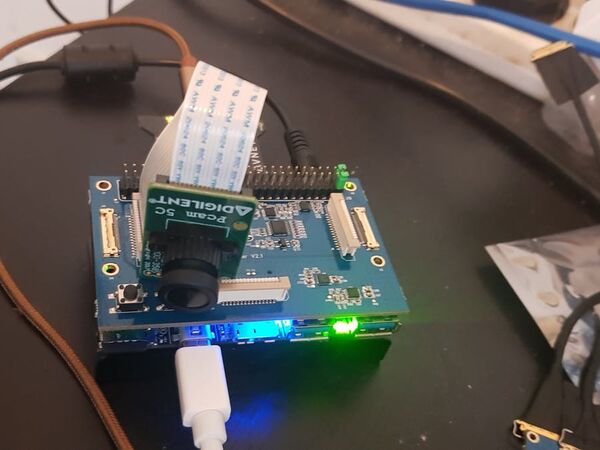
MIPI Procesing with Ultra96
"Creating a high performance edge processing node using the Ultra96, MIPI and DisplayPort. Introduction Image processing at the edge requires not only high performance but also, compact size and power efficiency. The Ultra96 enables us to create a image processing solution which uses the processing system and its programmable logic to its maximum potential. Thanks to the support for MIPI DPhy and DisplayPort we can create a very compact and efficient solution. Once we have this solution passing through the image data we can then expand it to support applications including machine learning and implementing image processing at the edge. In this project we are going to look at how we can create an image processing system which uses the PCam5 or R-PI Camera and its MIPI input to receive an input and then output the image over the DisplayPort Output." [...]

The 'Do More' Timer, Inspired by Casey Neistat
"Summer, the lovely season when things happen. But sometimes we tend to forget the time. So to remind us the time left , I designed this Casey Neistat's 'Do More' DIY arduino driven timer which can be programmed to display the time left from any event, the start of a day or the start of summer its on you. All there was left to do was add a pair of Casey's signature glasses. But I will leave that to you guys ;D So lets get started and DO MORE!!! " [...]

Getting Started with the New ATtiny Chips
"In 2016 Microchip/Atmel announced a completely new range of chips designed to replace their older ATmega and ATtiny ranges. The new ATtiny chips started with the 1-series ATtiny417 and ATtiny817, followed in 2018 by a lower cost series called the 0-series. The range now consists of a total of 25 parts. Until recently these new chips were not accessible to users of the Arduino IDE, because no Arduino core existed for them, and you couldn't program them using the existing ISP programmers. That changed a couple of months ago when Spence Konde released a megaTinyCore [1] for the new range, taking advantage of the work that Arduino have done to support their new ATmega4809-based boards. This article gives an introduction to the new ATtiny parts, and explains how you can now program them from the Arduino IDE." [...]

SteamPunk Radio
"This project is without doubt the most complex I have undertaken, with sixteen IV-11 VFD tubes, two Arduino Mega cards, ten LED Neon light circuits, a servo, an electromagnet, two MAX6921AWI IC Chips, five DC power supplies, a HV power supply, two DC Volt meters, a DC Amp meter, FM stereo radio, 3W power amplifier, LCD screen, and keyboard. Apart from the above parts list, two software programs had to developed from scratch and finally the construction of the entire radio required about 200 hours of work. I decided to include this project onto the Instructables site not expecting members to reproduce this project in its entirety but rather to cherry pick the elements that where of interest to them. Two areas of particular interest to the site members may be the control of the 16 IV-11 VDF tubes using two MAX6921AWI chips and its associated wiring, and the communications between two Mega 2650 cards. The various components included into this project have been sourced locally, except the IV-11 tubes, and the MAX6921AWI chips both obtained on EBay. I wanted to bring back to life various items that would otherwise languish in boxes for years." [...]
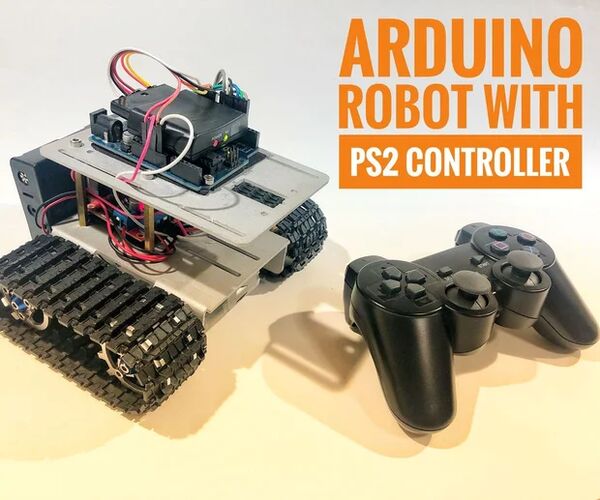
Arduino Robot With PS2 Controller (PlayStation 2 Joystick)
"In this tutorial I'll show you how to use a wireless Playstation 2 (PS2) joystick to pilot a robotic tank. An Arduino Uno board was used at the core of this project. It receives commands from the wireless controller and sets the speed of the motors. Other development boards might also be used (NodeMCU, Firebeetle, etc. ), and the principles presented in this tutorial can be applied on other models of robots and gadgets. I've previously designed a Blynk controlled robotic tank." [...]

Campable - the Internet of Tents!
"Campable helps you find the perfect spot to pitch your tent while protecting you from increasingly erratic weather! Weather around the world seems to be getting more extreme and more unpredictable, with 2019 setting myriad extreme weather records. So what are people who still wish to be able to enjoy the great outdoors to do? Enter Campable - the Internet of Tents! Thanks to Particle's 3rd generation of IoT hardware and its compatibility with Adafruit's Feather Specification, creating cloud-enabled sensors to help monitor our environment is easier than ever! Getting Started The Particle Argon Kit comes with everything you need to get started, and you can find a handy setup guide in the Argon Quick Start." [...]
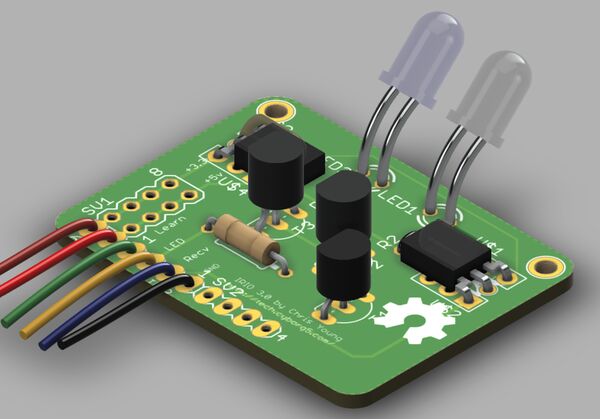
Building an Infrared Transmitter and Receiver Board
"Most remote controls for your TV, cable box, Blu-ray player or other consumer electronic devices use infrared signals. IR is also an inexpensive and effective way to control a variety of maker projects. IR is especially useful in creating assistive technology devices for the disabled, such as mouse and keyboard emulators. In another tutorial, we describe how to use an open source library called "IRLib" which allows you to decode or encode a wide variety of standard protocols used by consumer electronic devices. This IR breakout board help you get the most out of IRLib. Here is a tutorial on how to use IRLib." [...]
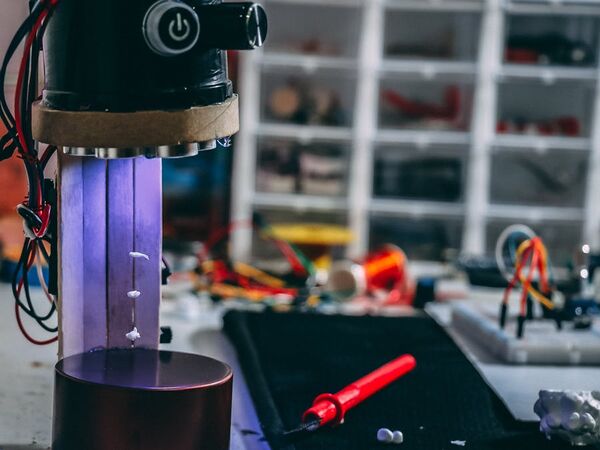
How to Make an Ultrasonic Levitator Using Arduino
"Today I will show you how to make your ultrasonic levitator using an Arduino Nano. Everything you needed for this project: Arduino Nano Motor driver L298N Ultrasonic Sensor Module (HC-SR04) What is an ultrasonic levitator? Acoustic levitation (also: Acoustophoresis) is a method for suspending matter in a medium by using acoustic radiation pressure from intense sound waves in the medium. Sometimes sound waves at ultrasonic frequencies can be used to levitate objects, thus creating no sound heard by the human ear, such as was demonstrated at Otsuka Lab while others use audible frequencies. There are various ways of emitting the sound wave, from creating a wave underneath the object and reflecting it back to its source, to using a (transparent) tank to create a large acoustic field. What is an ultrasonic sensor?" [...]
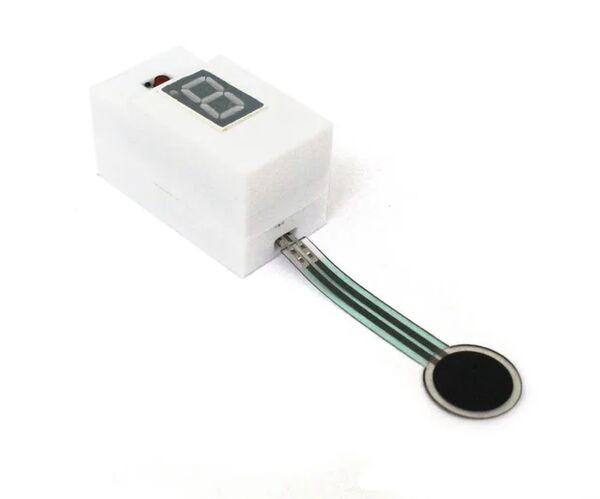
FS-Touch Bed Levelling Tool
"Tired of trying to get the perfect levelled 3D printer bed? Frustrated with guessimating the proper resistance between nozzle and paper? Well, FS-Touch will help you measure this pinching force quantitatively and achieve quick and accurate bed levelling in no time. Features of this bed levelling(proper term is tramming) tool: Works with all types of beds: metal, glass, magnetic Allows measuring the force and comparing against a reference force value. The reference value can be set to new value with press of a button. Indicates direction to rotate levelling knobs, because everyone gets confused which direction is up and which is down!" [...]

Nixie Wrist Watch, 4 Digits
"This project is about making a 4-digit nixie wrist watch. Supplies: small size nixie tubes (4) Arduino pro mimi IC 7805 IC 555 IC 74141 (or 7441) MPSA42 Transistors (5) MPSA92 transistors (4) RTC module DS3231 IRF740 mosfet UF4007 diode 33 kohm resistors (5) 22 kohm resistors (4) 100 kohm resistors (5) 10 ohm resistor 1 kohm resistor 10 kohm resistors (4) 470 kohm resistors (4) 5 kohm potentiometer 100 nF 600V capacitor 100 pF capacitor 2.2 nF capacitor 100 uH 1A inductor Lithium polymere batteries 300 mAh (2) On/off switch Push buttons (2) Female jack (smallest size) Charger adapter (8.4 volt, 1A) 3D printed case Watch straps" [...]

G-showC
"I made a watch using M5StickC. When the M5StickC angle matches, the time is displayed. Gravity shows clock. This is G-showC. " [...]
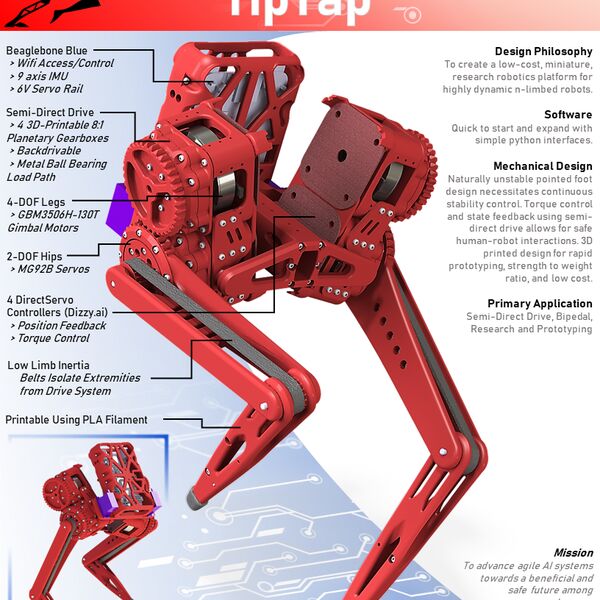
TipTap
"A 3d-printed bipedal robot.A desktop option for semi-direct drive walking research. By keeping things small I aim to create a sub $500 walking robot that can be used to test out control algorithms and simulation fidelity using semi-direct drive control. I started this project in 2017 as a way to teach myself how all this stuff works on weekends. Advice is very much appreciated (This is all a learning experience for me). Thanks for looking and have a great day! " [...]

Arduino Air Quality Monitor with DSM501A Sensor
"A cheap DIY air quality monitoring device. Air quality monitoring is well known and established science which started back in the '80s. At that time, the technology was quite limited, and the solution used to quantify the air pollution complex, cumbersome and really expensive. Fortunately, nowadays, with the most recent and modern technologies, the solutions used for Air Quality monitoring are becoming not only more precise, but also faster at measuring. Devices are becoming smaller, and cost much more affordable than ever before. The presented device uses the Samyoung " DSM501A " Dust sensor which is one of the cheapest on the market and can be purchased at AliExpress for a few dollars.This sensor is capable of detecting PM2.5 as well as PM10 particles." [...]

ESP8266 Based Multisensor
"The ESP8266 is a handy little device which can be programmed and used easily, but we have to use the available GPIO pins wisely because there are not too many of them. In this short summary I will show you how to attach multiple different sensors to it. The most important part of this device is the casing, as i do not have a 3D printer, I used an existing motion sensor lighting casing. Luckily the hole on it is exactly the size of the SR501 motion sensors dome! Donwei Motion Sensor (ebay) (aliexpress) D1 Mini ESP8266 development board Prototype Paper PCB For DIY 5x7cm USB Port 5V 1A Wall Charger HC-SR501 Infrared PIR Motion Sensor Module RCWL-0516 Microwave Radar Sensor Module 1 x 10V 100uF Electrolytic capacitor (optional, just to minimize false alarms) 2 x 10K resistor (optional, just to minimize false alarms) MICRO USB To DIP Adapter 5pins DHT22 Temperature Humidity Sensor 4.7K resistor BH1750 Digital Light Intensity Sensor Module Piezo buzzer 3V 330 ohm resistor WS2812 1-Bit RGB Module Scrap the inside panel from the casing, also cut off the battery holder, as it is takes up too much space. Cut the prototype paper until it fits nicely into the casing, and try to arrange the components." [...]
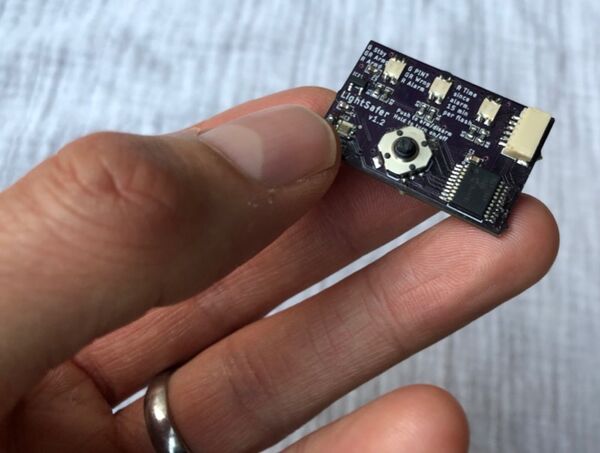
LightSafer
"Has somebody been snooping around in your hotel safe? I wanted a simple device that would tell me if somebody had been in my hotel safe whilst I was out on holiday, so I designed LightSafer. LightSafer is a tiny 33 x 21 mm (1.3 x 0.8 inch) gadget with PIN code entry that lets you know if somebody has been snooping around in your hotel safe (or sock drawer). It's completely silent. You just press the button to arm LightSafer, put it in your safe and if anybody opens the safe and fails to enter the correct PIN, the alarm LED lights. Once the alarm is triggered there is no way to turn it off." [...]
That's all Folks!



